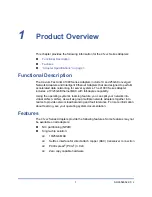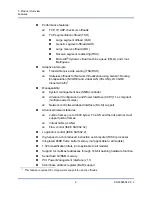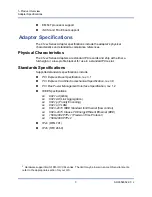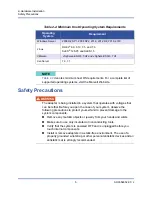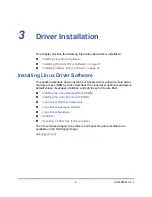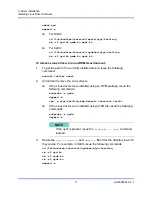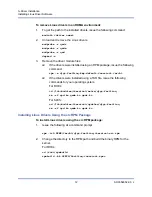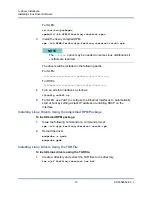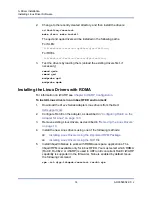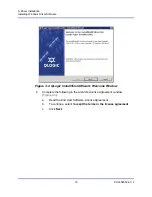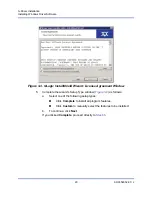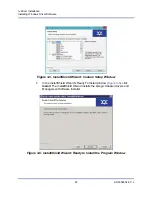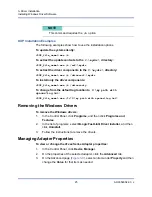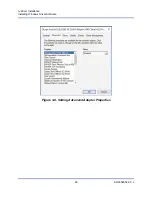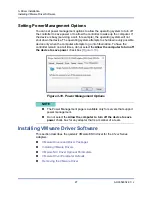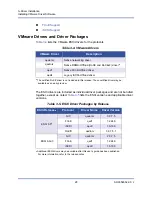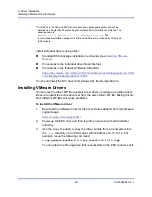
3–Driver Installation
Installing Linux Driver Software
14
AH0054602-00 J
2.
Change to the recently created directory, and then install the drivers:
cd fastlinq-<version>
make clean; make install
The qed and qede drivers will be installed in the following paths.
For SLES:
/lib/modules/<version>/updates/qlgc-fastlinq
For RHEL:
/lib/modules/<version>/extra/qlgc-fastlinq
3.
Test the drivers by loading them (unload the existing drivers first, if
necessary):
rmmod qede
rmmod qed
modprobe qed
modprobe qede
Installing the Linux Drivers with RDMA
For information on iWARP, see
To install Linux drivers in an inbox OFED environment:
1.
Download the 41
xxx
Series Adapter Linux drivers from the Dell:
dell.support.com
2.
Configure RoCE on the adapter, as described in
Adapter for Linux” on page 143
3.
Remove existing Linux drivers, as described in
4.
Install the new Linux drivers using one of the following methods:
Installing Linux Drivers Using the kmp/kmod RPM Package
Installing Linux Drivers Using the TAR File
5.
Install libqedr libraries to work with RDMA user space applications. The
libqedr RPM is available only for inbox OFED. You must select which RDMA
(RoCE, RoCEv2, or iWARP) is used in UEFI until concurrent RoCE+iWARP
capability is supported in the firmware). None is enabled by default. Issue
the following command:
rpm –ivh qlgc-libqedr-<version>.<arch>.rpm


